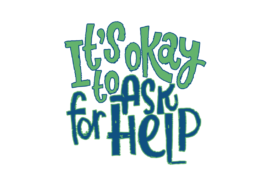Dr. Rachel Hiller gives a video abstract of her paper ‘A longitudinal study of cognitive predictors of (complex) post‐traumatic stress in young people in out‐of‐home care’ first published in Journal of Child Psychology & Psychiatry (JCPP) 20 March 2020. Read the paper doi.org/10.1111/jcpp.13232
Full authors: Rachel M. Hiller, Richard Meiser‐Stedman, Elizabeth Elliott, Rosie Banting, Sarah L. Halligan
Background
Young people in out‐of‐home care are substantially more likely to meet criteria for PTSD than their peers, while their early maltreatment exposure may also place them at greater risk of developing the newly proposed complex PTSD. Yet, there remains limited empirical evidence for the mechanisms that might drive either PTSD or complex features in this group, and ongoing debate about the suitability of existing cognitive behavioural models and their related NICE‐recommended treatments. In a prospective study of young people in out‐of‐home care, we sought to identify demographic and cognitive processes that may contribute to the maintenance of both PTSD symptom and complex features.
Read The Bridge research digest of this paper

Dr. Rachel Hiller is a lecturer in child and adolescent clinical psychology in the Department of Psychology, University of Bath. Her research examines cognitive-behavioural processes that link the experience of child trauma or maltreatment to psychological outcomes, with a focus on posttraumatic stress disorder (PTSD). It is focused on high-risk groups, including those exposed to multiple traumas or maltreatment and where trauma is experienced in the context of ongoing adversity. Rachel is particularly interested in exploring ways to improve access to evidence-based trauma-focussed psychological interventions for vulnerable groups of youth and in how different services (e.g., social-care, mental health, education) understand and respond to the needs of trauma-exposed young people.
Transcript
Hi. My name’s Rachel Hiller. I’m from the Department of Psychology at the University of Bath. And today, I’m here to give a brief summary of some research that we’ve basically had published in the Journal of Child Psychology & Psychiatry and the title of the paper is a Longitudinal study of cognitive predictors of complex post-traumatic stress in young people in out-of-home care and the paper is available Open Access for anyone who’s interested in learning more about the work we’ve been doing.
So, as the title of this paper suggests, in this project, we were interested in understanding whether our existing cognitive models of Post-Traumatic Stress Disorder or PTSD might be applicable to young people in care.
Now, in the paper, we give more details about what those models are and we also give a description of both PTSD and the more-newly proposed complex PTSD criteria.
So, cognitive models of PTSD have been around for a while and we have really good evidence for them in adult samples. So, for example, war veterans or adults that have been exposed to serious accidents and, more recently, we’re developing good evidence for these models in young people and children and teens, that is.
But that has particularly been with young people that have been exposed to a single incident or one-off traumas, such as car accidents or one-off assaults.
In this project, we’re interested in whether the same models would apply to young people in Care where, unfortunately, we know that their traumatic experiences have often been ongoing and very complex. So, sometimes these experiences are referred to as Development Mental Trauma, sometimes Complex Trauma and these experiences that have often happened over many years.
The reason we’re interested in understanding whether these models are applicable to young people in care is that, not only does it help us to understand what might maintain symptoms in this group, but it also provides us with some evidence of what the useful treatment targets might be.
So, this project worked with 120 young people in care. They were recruited from three English Local Authorities and they were 10-18 years old. Most of the young people in our Study were under the care of a non-biological foster carer, some were in kinship placements, some were in residential care homes and also in independent living. And, again, more details about the methods and recruitment can be found in the paper.
So we saw these young people for an initial assessment where they completed a questionnaire pack for us and then we saw them again 12 months later where they also completed the same questionnaire pack. At each time point, their primary carer also completed a questionnaire pack.
In terms of the main take-home points from this study, the first take-home point is, that our existing cognitive models of PTSD were found to be highly applicable to these young people and there were three core processes that we were interested in, in this study. The first is the meaning that the young person draws from their experiences which are sometimes referred to as negative or maladaptive cognitions, and this might be things, like, ‘I can’t trust anyone,’ ‘the world isn’t safe for me,’ ‘I’ll never get over what’s happened.’
The second process we were interested in were around the qualities of their trauma memories. So this particularly looks at the level of disorganisational confusion around their memories, as well as sensory heavy memories, like, being able to smell things that you smelt at the time, or hear things that you heard at the time.
The final process we were interested in were coping strategies, and here we’re particularly looking at the use of avoiding coping, avoiding thinking about, or avoiding talking about what they’ve been through.
So, in this study, we found that all three of these processes were important, in terms of their baseline Post Traumatic Stress scores and their longer-term Post Traumatic Stress scores.
The other thing we found was that these three processes were also important in relation to the new complex features of complex PTSD. So, all three processes were associated with symptom severity.
What we found was particularly important was the meaning, or their negative cognitions that were developed after this exposure and, again, that’s things like, ‘I’ll never get over what happened,’ ‘I can’t trust anyone,’ etc. So, the meaning that they draw from their experiences or negative cognitions were particularly strong drivers of both PTSD symptom severity and complex features severity.
So, the fact that our existing cognitive models of PTSD were really applicable to young people in Care suggests that these processes will also be useful to target in their treatments. Now, pleasingly, we already have really good treatments to target these processes, so the first-line recommended treatment for PTSD, including in children and young people, is trauma-focused cognitive behaviour therapy. So this is a therapy that targets those processes that I’ve just referred to and what these findings suggest from a mechanism study is, that if a young person in care is experiencing PTSD, it’s really important that they’re getting access to this evidence-based treatment to target these processes.
Another key take-home message from this study was that the objective severity of the maltreatment the young person experienced and the age that they came into the Care system were actually not robust predictors of their symptom severity.
So what was much more robust, in terms of predictors of symptom severity, were these cognitive processes that I’ve just talked about. And what that means is, that we can’t necessarily, or certainly cannot robustly tell when a young person comes into Care, based on what we know about what they’ve experienced, whether or not they might go on to develop PTSD symptoms.
So that means that, really importantly, the best way to understand whether a young person in care might be struggling with PTSD symptoms is to be ensuring that we’re screening for PTSD symptoms and ensuring that systems around those young people are asking about these symptoms and these experiences.
So that’s going to be really important at all levels of services to make sure that we’re identifying the mental health needs of our young people, so we can then provide the best evidence-based treatments for them.
So they’re the, kind of, key take-home messages from this study. I hope that was useful. As I said, if you want more information around the details of this project and more details about what we found in this project, please do see the paper and I’ll just finish by thanking my co-authors and collaborators on this work, but also, particularly thanking the young people that volunteered so much time for this project and their Carers as well, as well as our Social Care staff and our Mental Health staff who have been amazing collaborators in this work and our ongoing work. We’re incredibly thankful for all that we continue to learn from the young people that we work with, Carers and services as well.
Thanks.


